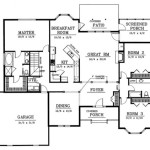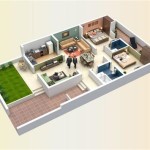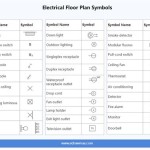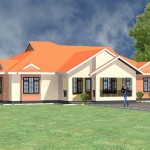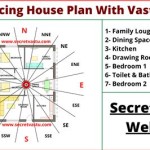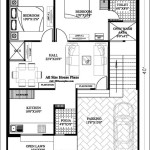Storage Shed House Plans: Exploring Creative Options for Living Spaces
The concept of transforming storage sheds into habitable dwellings has gained significant traction in recent years. This trend is fueled by factors such as the increasing cost of traditional housing, the desire for smaller, more sustainable living options, and the growing acceptance of alternative housing models. Storage shed house plans offer a potentially affordable and flexible solution for individuals and families seeking innovative living arrangements.
However, converting a storage shed into a livable space presents unique challenges and requires careful planning. Navigating local building codes, ensuring structural integrity, and creating a comfortable and functional interior are crucial considerations. Understanding the range of available storage shed house plans and the specific requirements of such projects is essential for success.
Storage sheds are typically designed for simple storage purposes, lacking the insulation, plumbing, and electrical infrastructure necessary for residential living. Adapting these structures requires significant modifications and upgrades. The following sections will explore key aspects of storage shed house plans, including design considerations, construction requirements, and potential cost implications.
Understanding Different Types of Storage Shed House Plans
Storage shed house plans encompass a broad spectrum of designs and configurations. The initial structure itself can vary significantly, impacting the subsequent conversion process. Common types of storage sheds include wooden sheds, metal sheds, and plastic sheds, each with distinct advantages and disadvantages in terms of durability, insulation potential, and structural adaptability.
Wooden sheds are often favored for their aesthetic appeal and ease of modification. Wood is a relatively easy material to work with, allowing for straightforward framing, insulation, and finishing details. However, wood is susceptible to moisture damage, rot, and insect infestation, necessitating proper treatment and maintenance.
Metal sheds offer superior durability and resistance to weather and pests. However, metal is a poor insulator and can be challenging to modify. Adding insulation to a metal shed requires careful planning to prevent condensation and corrosion. Welding or specialized fasteners may be necessary for structural modifications.
Plastic sheds are lightweight, weather-resistant, and relatively inexpensive. However, they typically lack the structural strength required for significant modifications and may not be suitable for conversion into habitable dwellings in many jurisdictions. Their limited load-bearing capacity and potential for deformation under extreme temperatures are significant drawbacks.
Beyond the basic shed type, specific design plans can vary widely. Some plans focus on minimalist living, incorporating a single open space with basic amenities. Others aim for a more compartmentalized layout with separate living, sleeping, and bathroom areas. The choice of plan depends on the desired living arrangement, budget, and local building codes.
For example, a simple shed house plan might involve adding insulation, wiring, and basic plumbing to an existing wooden shed. This type of conversion might be suitable for a weekend cabin or a small studio apartment. A more ambitious plan might involve reinforcing the structure, adding windows and doors, and constructing interior walls to create a fully functional living space with multiple rooms.
Key Construction Considerations for Storage Shed Conversions
Converting a storage shed into a habitable dwelling involves a range of construction requirements, including foundation work, framing modifications, insulation, plumbing, electrical wiring, and finishing details. Each of these aspects must be carefully addressed to ensure the safety, comfort, and code compliance of the finished structure.
The foundation is a critical element of any building, providing structural support and protecting the structure from moisture damage. Storage sheds often have inadequate foundations, requiring significant upgrades or replacement. Options include concrete slabs, pier and beam foundations, and gravel pads. The choice of foundation depends on soil conditions, local climate, and building code requirements.
Framing modifications may be necessary to reinforce the existing structure and create openings for windows and doors. Adding studs, headers, and joists can improve the structural integrity of the shed and provide a framework for insulation and finishing materials. Ensuring that the framing is properly aligned and securely fastened is essential for long-term stability.
Insulation is crucial for creating a comfortable and energy-efficient living space. Proper insulation helps to regulate temperature, reduce noise, and prevent moisture condensation. Common insulation materials include fiberglass, rigid foam, spray foam, and cellulose. The choice of insulation depends on factors such as R-value, cost, and ease of installation.
Plumbing and electrical wiring are essential for providing running water, sanitation, and power. These systems must be installed by qualified professionals and comply with local building codes. Plumbing typically involves installing water lines, drain lines, and fixtures such as sinks, toilets, and showers. Electrical wiring involves installing outlets, switches, and lighting fixtures, as well as connecting the structure to the electrical grid.
Finishing details include interior and exterior cladding, flooring, and paint. These elements contribute to the aesthetic appeal and functionality of the living space. Common cladding materials include wood siding, metal siding, and stucco. Flooring options include hardwood, laminate, tile, and carpet. Paint can be used to protect and beautify both the interior and exterior surfaces.
Addressing Building Codes and Regulations
Converting a storage shed into a habitable dwelling typically requires compliance with local building codes and regulations. These codes are designed to ensure the safety, health, and welfare of occupants and the surrounding community. Ignoring or circumventing building codes can result in fines, legal action, and potentially unsafe living conditions.
Building codes vary depending on the jurisdiction and may cover aspects such as structural integrity, fire safety, plumbing, electrical wiring, and accessibility. Obtaining the necessary permits and inspections is essential for ensuring compliance with these codes. The permit process typically involves submitting detailed plans and specifications to the local building department for review and approval.
Common code requirements for storage shed conversions include minimum ceiling heights, window sizes, and egress routes. Ceiling heights must be adequate to allow for comfortable movement and ventilation. Windows must be large enough to provide sufficient natural light and ventilation. Egress routes must be clear and accessible in case of fire or other emergencies.
Fire safety is a particularly important consideration in storage shed conversions. Smoke detectors and carbon monoxide detectors must be installed in accordance with local codes. Fire-resistant materials may be required for walls, ceilings, and floors. Adequate fire extinguishers must be readily available. In some cases, a sprinkler system may be required.
Accessibility requirements may apply if the shed house is intended for occupancy by individuals with disabilities. These requirements may include ramps, wider doorways, and accessible bathrooms. Compliance with accessibility codes can significantly increase the cost and complexity of the conversion project.
Furthermore, zoning regulations may restrict the types of structures that can be built or converted on a particular property. Zoning ordinances may specify minimum lot sizes, setbacks from property lines, and maximum building heights. It is crucial to verify that the proposed storage shed conversion complies with all applicable zoning regulations before beginning construction.
Before starting any work, consulting with a qualified architect, engineer, or contractor is highly recommended. These professionals can provide guidance on design, construction, and code compliance. They can also help to navigate the permit process and ensure that the finished structure meets all applicable requirements.
The cost of converting a storage shed into a habitable dwelling can vary widely depending on the size and complexity of the project, as well as local labor and material costs. A simple conversion might cost a few thousand dollars, while a more elaborate project could cost tens of thousands of dollars. Careful budgeting and cost management are essential for avoiding unexpected expenses.
Factors that can significantly impact the cost of a storage shed conversion include the type of shed, the extent of structural modifications, the quality of materials, and the cost of labor. Hiring experienced contractors can increase labor costs but can also help to ensure that the project is completed safely and efficiently.
Obtaining multiple bids from different contractors is recommended to ensure that the price is competitive. A detailed contract should be signed before any work begins, outlining the scope of the project, the payment schedule, and the responsibilities of each party. Regular communication with the contractor is essential for monitoring progress and addressing any issues that may arise.
Storage shed house plans offer a compelling alternative for those seeking affordable and flexible living solutions. However, successful conversion requires careful planning, diligent execution, and strict adherence to local building codes and regulations. By understanding the key considerations outlined above, individuals can navigate the complexities of this process and create a comfortable and functional living space.

Shed To Home 16x40 Floor Plan House Plans Tiny

Plans Blueprints For Storage Sheds Writing Bureau Rightful73vke Building Diy Shed
:max_bytes(150000):strip_icc()/gable-storage-shed-plan-5b6330d84cedfd0050acfabc.png?strip=all)
15 Free Shed Plans That Will Help You Build A

Pin By Kris Verrier On Tiny House Plans Shed To Lofted Barn Cabin Floor

Free Shed Plans With Material Lists And Diy Instructions Shedplans Org

Shed Plans How To Build A Storage Building

Home Depot Storage Sheds Buildings Ll Believe Corporations Are Persons When Executes One Lbj S Wood Shed Plans House Design

Free Shed Plans With Material Lists And Diy Instructions Shedplans Org

How Much Does It Cost To Build A Shed House

14 X 24 Storage Shed Home Office Cabin Or Cottage Building Plans Design

